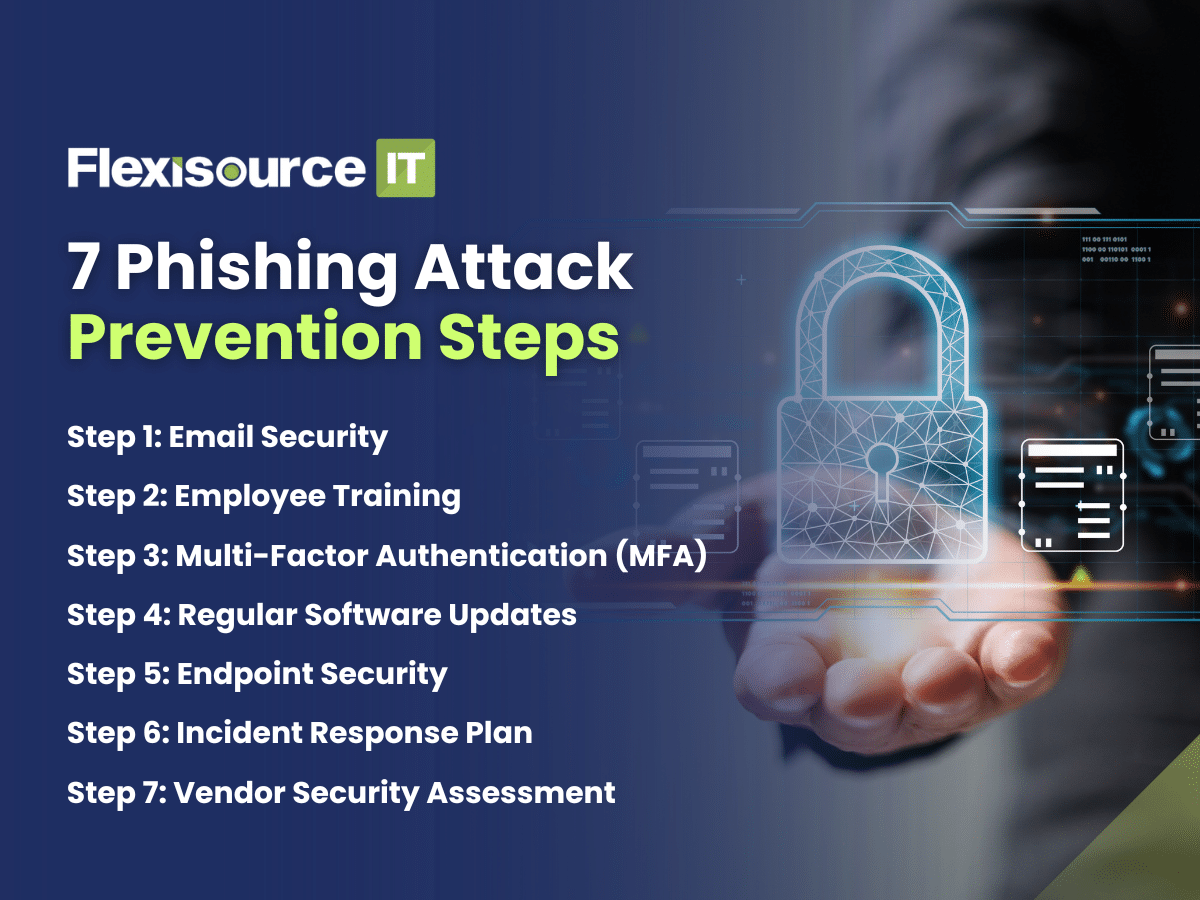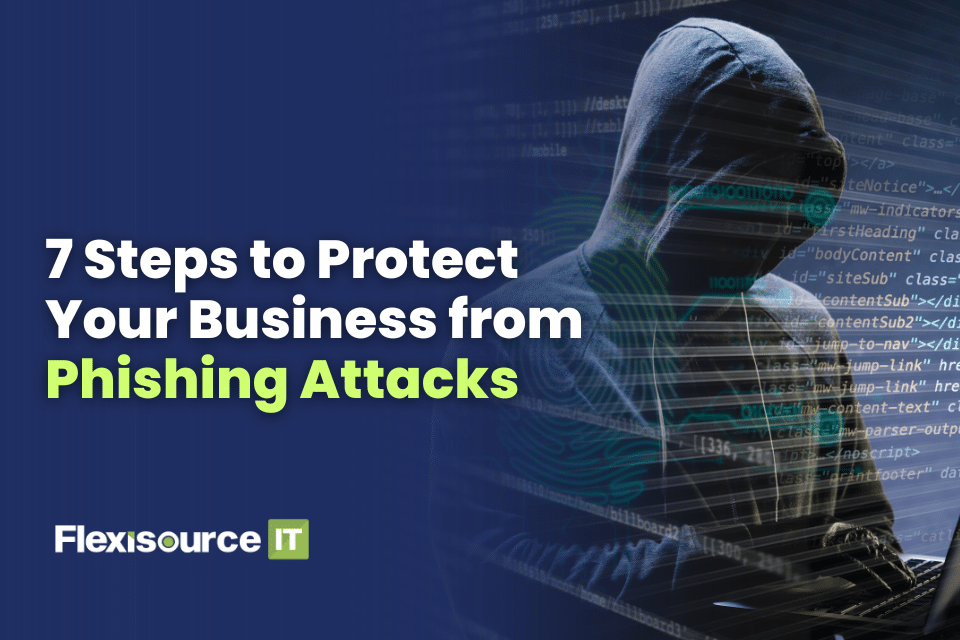Phishing attacks have become a prevalent threat in today’s digital landscape, posing serious risks to businesses of all sizes. These deceptive tactics, often disguised as legitimate communication, aim to trick individuals into revealing sensitive information such as passwords, financial details, or confidential company data.
As small and medium-sized businesses increasingly rely on digital platforms for their operations, the need to fortify defences against phishing attacks has never been more critical. So, in this article, we will discuss various phishing attack prevention
What are phishing attacks?
Phishing attacks are one of the most common cybersecurity threats worldwide. It involve fraudulent attempts to obtain sensitive information, such as login credentials, financial data, or personal details, by masquerading as trustworthy entities. These attacks commonly occur via email, where cybercriminals send deceptive messages designed to lure recipients into clicking malicious links, downloading malware-infected attachments, or providing confidential information.
Importance of protecting businesses from phishing
Protecting businesses from phishing attacks is of paramount importance for several reasons:
- Financial Loss Prevention. Phishing attacks can result in significant financial losses for businesses. Cybercriminals often target businesses to gain access to sensitive financial information such as bank account details, credit card numbers, or login credentials. With the right cyber protection, businesses can avoid the financial repercussions associated with such breaches.
- Data Security. Phishing attacks can lead to the compromise of sensitive business data. This could include customer information, intellectual property, or proprietary business secrets. Protecting against phishing helps safeguard this critical data from falling into the wrong hands, thereby maintaining the confidentiality of business operations.
- Reputation Management. A successful phishing attack can damage a business’s reputation. If customers or clients perceive a business as insecure or untrustworthy due to a breach, it can lead to a loss of trust and credibility.
- Operational Continuity. Phishing attacks can disrupt normal business operations, causing downtime and productivity losses. Protecting against phishing ensures the continuity of business operations without interruptions caused by cyber threats.
- Compliance Requirements. Many industries have regulatory requirements regarding data protection and cybersecurity. Failure to protect against phishing attacks can lead to non-compliance with these regulations, potentially resulting in legal consequences and financial penalties.
7 Phishing Attack Prevention Steps

With the information above, it is indisputable that phishing attack prevention is a must. However, not everyone is well aware of this cyber security issue. To help you protect your business, here are some steps to mitigate phishing attacks:
Step 1: Email Security
First things first – fortify your email defences like a pro. Email remains the primary vector for phishing attacks. A survey conducted by eGress with 500 cybersecurity professionals found that 79% of cyber-attacks started through phishing emails.
With that said, it is undeniable that businesses need to strengthen their email security protocols.
To do so, you should try these phishing best practices. First, set up top-notch spam filters, beefy phishing detectors, and email authentication tools to weed out those shady messages before they even land in your inbox.
Additionally, deploying email authentication mechanisms such as SPF, DKIM, and DMARC can prevent email spoofing and domain impersonation, reducing the likelihood of successful phishing attempts.
Step 2: Employee Training
The next step in phishing attack prevention is employee training. Human error remains one of the weakest links in cybersecurity defences. In a study conducted by Stanford University, they found that human errors cause 88% of data breaches.
Likewise, companies must create comprehensive employee training in phishing prevention efforts. You should educate staff members about the various phishing attacks, including email, phone, and text-based scams, which can empower them to recognise and report suspicious activity promptly. Furthermore, Regular training sessions, simulated phishing exercises, and awareness campaigns can cultivate a culture of vigilance and resilience within the organisation.
Step 3: Multi-Factor Authentication (MFA)
MFA, short for multi-factor authentication, is a security measure that adds protection to your online accounts. Instead of relying on a password, MFA requires you to provide additional verification, such as a code sent to your phone or a fingerprint scan.
Think of MFA as your cybersecurity guard. You not only need the key (your password) to get in, but you also must provide something else, like a fingerprint or a one-time code sent to your phone. It’s like adding an extra layer of security to keep the bad guys out, even if they manage to get your password through sneaky phishing tricks.
With that knowledge in mind, businesses should prioritise the adoption of MFA across all relevant systems. Implementing multi-factor authentication (MFA) not only adds an extra layer of security to sensitive accounts and applications but also reduces the risk of unauthorised access in the event of stolen credentials.
Step 4: Regular Software Updates
Cybercriminals often exploit outdated software and operating systems to gain unauthorised access to systems and networks. According to OWASP, vulnerable and obsolete components are among the top 10 web application security risks 2021.
To mitigate this risk, businesses should prioritise regular software updates and patches to address known vulnerabilities promptly. Automated patch management tools can streamline this phishing attack prevention, ensuring all devices and applications are up to date with the latest security fixes and enhancements.
Step 5: Endpoint Security
The next step to prevent phishing in business is establishing endpoint security. Endpoint devices such as laptops, desktops, and mobile devices represent prime targets for phishing attacks, particularly in remote or hybrid work environments. A Ponemon Institute study revealed that endpoint attacks, which can breach data and IT systems, affected 68% of organisations.
Additionally, 68% of IT professionals reported a rise in endpoint attack frequency from the previous year.
As such, deploying robust endpoint security solutions, including antivirus software, endpoint detection and response (EDR) tools, and mobile device management (MDM) systems, can help detect and mitigate phishing threats at the device level.
Additionally, enforcing device encryption, access controls, and remote wipe capabilities can safeguard sensitive data in the event of a security incident.
Step 6: Incident Response Plan
Despite best efforts to prevent phishing attacks, businesses must be prepared to respond effectively to a security breach to avoid expensive recovery costs and other issues.
Likewise, developing a comprehensive incident response plan is essential. Make sure to outline roles, responsibilities, and procedures for detecting, investigating, and mitigating phishing incidents. Regular tabletop exercises and incident simulations can test the effectiveness of this phishing attack prevention and ensure that all stakeholders are prepared to execute their respective tasks during a crisis.
Step 7: Vendor Security Assessment
Many businesses rely on third-party vendors and service providers to support their operations. According to a study by the Ponemon Institute, 54% of organisations in the US have experienced a data breach caused by a third party in the past 12 months.
With that, it is crucial to assess and monitor the security practices of these external partners. To do so, you must conduct thorough vendor security assessments, including evaluating their cybersecurity policies, procedures, and controls. This phishing attack prevention can help identify potential vulnerabilities and mitigate the risk of supply chain attacks.
Additionally, incorporating security clauses and contractual obligations into vendor agreements can hold vendors accountable for maintaining adequate security standards.
Conclusion
In a nutshell, keeping your business safe from phishing attacks doesn’t have to be rocket science. With these seven simple steps, you’ll be one step ahead of those cyber scammers in no time. You can significantly reduce their susceptibility to phishing threats and safeguard their sensitive assets from exploitation.
And remember, when it comes to cybersecurity, vigilance is critical. Stay informed, stay vigilant, and remain protected. Safeguard your business from phishing attacks with the right partner! Contact Flexisource IT today for expert cybersecurity solutions!









